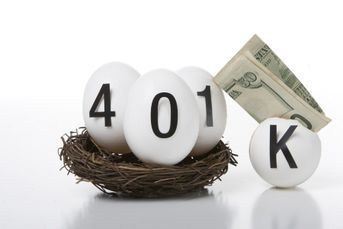Investors still flocking to junk in search of return
Junk bond fund deposits soar to highest this year as ETFs lead
Investors funneled the second- biggest amount of cash ever and the most this year into high-yield bond funds as the Federal Reserve’s announcement of new stimulus measures pushed them toward riskier assets.
Junk-debt funds recorded $3.63 billion into the funds in the week ended Sept. 19, the greatest volume since the $4.76 billion of inflows in the period ended Oct. 26, according to data compiled by EPFR Global. Exchange-traded funds that buy junk notes attracted 40 percent of all U.S. flows, the data show.
The Fed’s plan to expand its holdings of long-term securities to suppress borrowing costs has spurred bond buyers to seek returns from riskier debt. More institutional investors are directing money to ETFs as unprecedented demand for the notes makes it more difficult to quickly amass the bonds, according to BlackRock Inc. (BLK)’s Matthew Tucker.
“The biggest growth area that we’ve seen over the past 12 months has been in institutional players who trade in the fixed- income space,” said Tucker, head of iShares Fixed Income Strategy team at BlackRock Inc. “Bonds are so scarce, it’s creating a lot of challenges with smaller players in the market with them actually accessing securities.”
BlackRock’s high-yield ETF (HYG), the biggest of its kind, increased its assets by $402 million this week, while State Street Corp. (STT)’s fund, the second biggest, boosted its holdings by $163 million, according to data compiled by Bloomberg.
$32 Billion
The five-year-old industry of junk-bond ETFs, listed on exchanges and brokered like stocks, has expanded by 57 percent this year to include almost $32 billion of assets among the five largest funds, Bloomberg data show. This week’s inflows to all high-yield funds builds on a record $55.9 billion reported this year through Sept. 12, EPFR data show.
While borrowers are selling speculative-grade notes in the U.S. at an unprecedented pace, most of the proceeds are going toward paying off existing debt, resulting in little growth in the pool of available bonds. About 61 percent of junk bonds were issued for refinancing purposes this year compared with 58 percent during the period in 2011, according to an Aug. 31 JPMorgan Chase & Co. report.
Junk-bond buyers are accepting the lowest yields ever after the Fed’s announcement of a third round of quantitative easing as they seek a reprieve from a fourth year of near-zero interest rates. Yields on junk bonds in the U.S. sank to a record 6.95 percent on Sept. 19, according to Bank of America Merrill Lynch index data.
‘Hold Yields’
European Central Bank President Mario Draghi pledged in July to do “whatever it takes” to save the euro from the region’s fiscal crisis. Draghi announced an agreement on Sept. 6 for an unlimited bond-buying program to lower borrowing costs in the region and fight speculation of a currency breakup.
“The macro-economic environment is like one we’ve never seen before,” said Brian Kinney, State Street’s global head of fixed-income beta solutions. “There’s a strong commitment by those central banks to hold yields low until there are signs of recovery.”
(Bloomberg News)
Learn more about reprints and licensing for this article.








